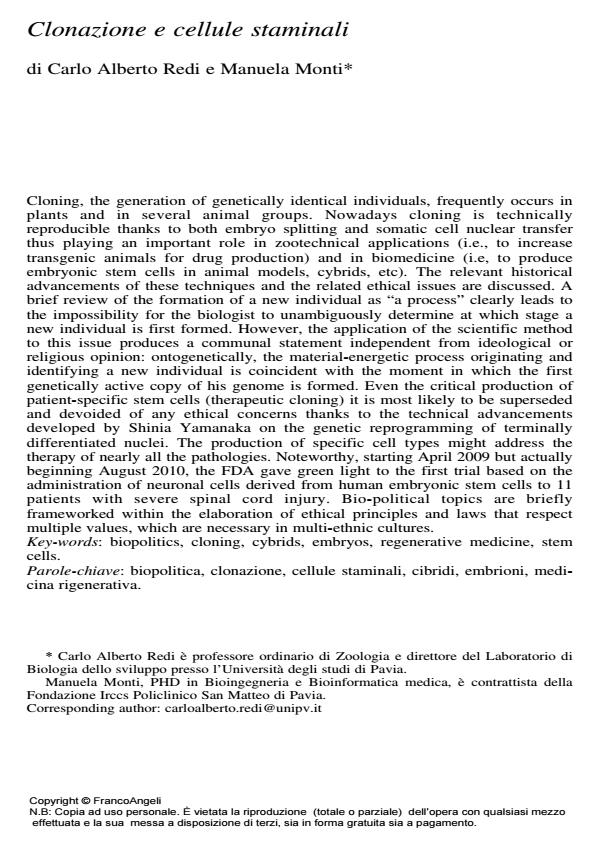Cloning and stem cells
Journal title SALUTE E SOCIETÀ
Author/s Carlo Alberto Redi, Manuela Monti
Publishing Year 2010 Issue 2010/3
Language Italian Pages 19 P. 79-97 File size 301 KB
DOI 10.3280/SES2010-003006
DOI is like a bar code for intellectual property: to have more infomation
click here
Below, you can see the article first page
If you want to buy this article in PDF format, you can do it, following the instructions to buy download credits

FrancoAngeli is member of Publishers International Linking Association, Inc (PILA), a not-for-profit association which run the CrossRef service enabling links to and from online scholarly content.
Since the early days of gene therapy, both the scientific community and the public have perceived the ethical challenges intrinsic to this discipline. First, the technology exploited by gene therapy is still experimental and burdened by important safety issues. Second, in several instances gene therapy aims at stably modifying the genetic characteristics of individuals. Third, the same modifications could in principle be applied also to embryos, foetuses or germ cells. Finally, while gene therapy applications are generally accepted for therapeutic purposes, the same gene transfer technologies could also be exploited to improve the aesthetic appearance, or the physical and intellectual performance of people. The definition of suitable guidelines for a controlled, ethically accepted translation of gene therapy to the clinics remains a major challenge for the near future.
Keywords: Cosmesis, embryos, gene doping, gene therapy, genetic engineering, hereditary diseases, informed consent
Carlo Alberto Redi, Manuela Monti, Clonazione e cellule staminali in "SALUTE E SOCIETÀ" 3/2010, pp 79-97, DOI: 10.3280/SES2010-003006